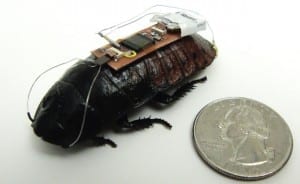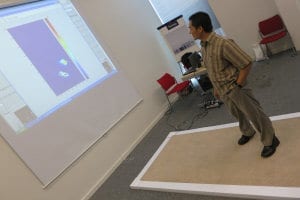Researchers from North Carolina State University have developed a technique that uses an electronic interface to remotely control, or steer, cockroaches.
“Our aim was to determine whether we could create a wireless biological interface with cockroaches, which are robust and able to infiltrate small spaces,” says Alper Bozkurt, an assistant professor of electrical engineering at NC State and co-author of a paper on the work. “Ultimately, we think this will allow us to create a mobile web of smart sensors that uses cockroaches to collect and transmit information, such as finding survivors in a building that’s been destroyed by an earthquake.
“Building small-scale robots that can perform in such uncertain, dynamic conditions is enormously difficult,” Bozkurt says. “We decided to use biobotic cockroaches in place of robots, as designing robots at that scale is very challenging and cockroaches are experts at performing in such a hostile environment.”
But you can’t just put sensors on a cockroach. Researchers needed to find a cost-effective and electrically safe way to control the roaches, to ensure the roaches operate within defined parameters – such as a disaster site – and to steer the roaches to specific areas of interest.
The new technique developed by Bozkurt’s team works by embedding a low-cost, light-weight, commercially-available chip with a wireless receiver and transmitter onto each roach (they used Madagascar hissing cockroaches). Weighing 0.7 grams, the cockroach backpack also contains a microcontroller that monitors the interface between the implanted electrodes and the tissue to avoid potential neural damage. The microcontroller is wired to the roach’s antennae and cerci.
The cerci are sensory organs on the roach’s abdomen, which are normally used to detect movement in the air that could indicate a predator is approaching – causing the roach to scurry away. But the researchers use the wires attached to the cerci to spur the roach into motion. The roach thinks something is sneaking up behind it and moves forward.
The wires attached to the antennae serve as electronic reins, injecting small charges into the roach’s neural tissue. The charges trick the roach into thinking that the antennae are in contact with a physical barrier, which effectively steers them in the opposite direction.
via North Carolina State University
The Latest Streaming News: Cyborgs updated minute-by-minute
Bookmark this page and come back often
Latest NEWS
Latest VIDEO









